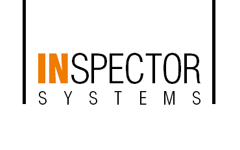Welded joints of pipes that protect high-voltage cables need special attention as, in a worst-case scenario, excessive edge offset or burrs might damage a cable when there is contact.
In concrete terms, the project involved the visual inspection of pipe joints of an underground pipe made of polyethylene (PE) plastic, of 1,000 metre length with diameters ranging from DN 250 to DN 280, through that a high-voltage cable was to be laid. The pipe joints of the pipe were produced in a process involving sleeve welding with incorporated heating element. In this process, a sleeve that contains a special wire heats up the pipe ends of the pipe sections, which will then transform into a thermoplastic state. During this, the material of the sleeve must be adapted to the pipe material at all times, as it is not possible to weld different types of plastic materials. In this thermoplastic state, the pipes and the sleeve are joined under pressure.
To ensure the continued secure and uninterrupted energy supply in the Emsland, a German region situated along the mid-course of the river Ems in western Lower Saxony, it was therefore required to safely assess beforehand whether a high-voltage cable could be installed in a pipe without problems. INSPECTOR SYSTEMS received the order to inspect all pipe joints using its Type 4.000 video/laser inspection robot.
The client was Dutch company TenneT, whose corporate history dates back to the early beginnings of the electricity era. A time when the first electric lights gradually replaced candles. Appointed by the Dutch government in 1998, TenneT has been the official operator of the national high-voltage transmission network in the Netherlands since then, and after purchasing the German high-voltage network from E.ON in 2010, it has also operated the major part of the electricity grid in Germany. Today, with approximately 41 million end consumers, TenneT is one of the leading transmission or distribution network operators (DNO) for electricity in Europe.
Equipped with a high-resolution colour camera, 360° rotatable and with pan-and-tilt function, the inspection robot reliably inspected the entire circumference of the pipe joints and, where necessary, any edge offsets, excessive penetrations or burrs were detected with an additional robot-mounted laser.

